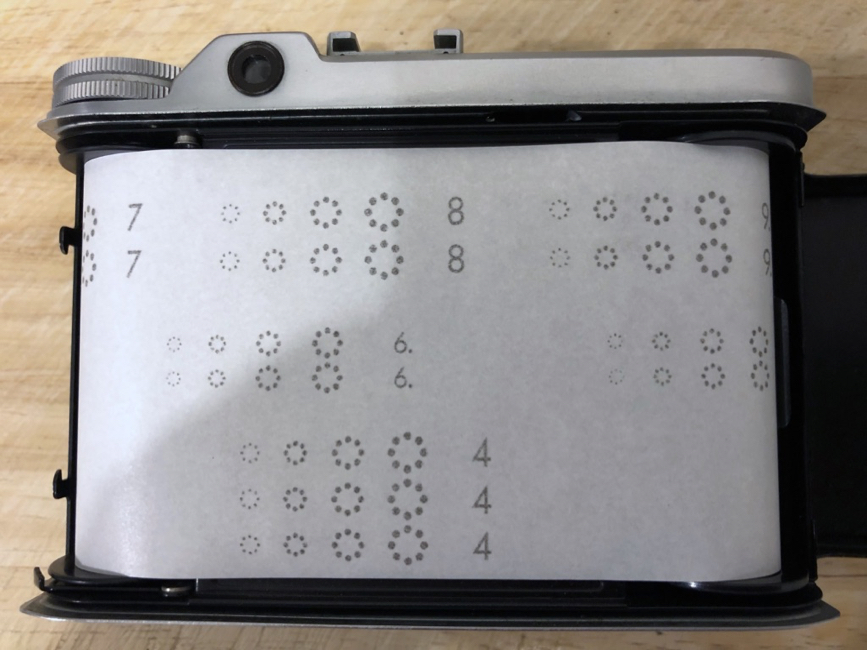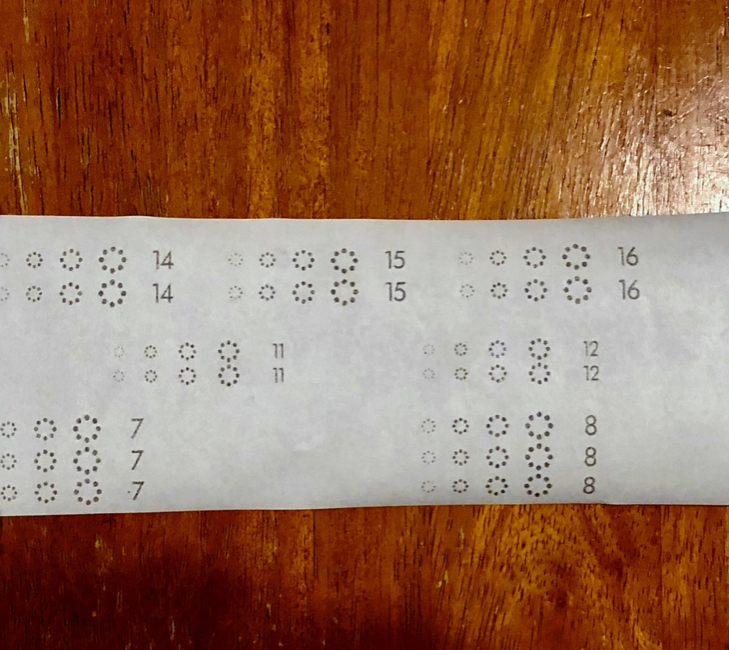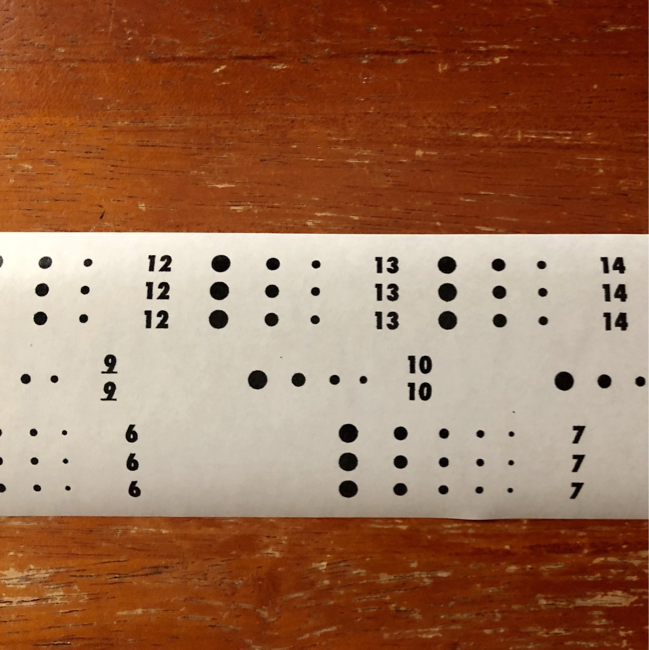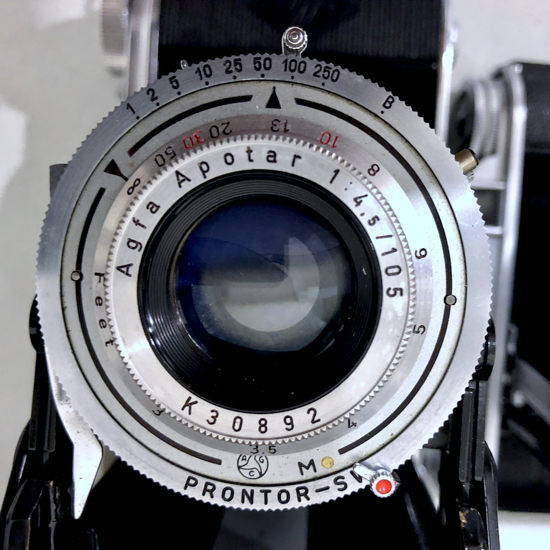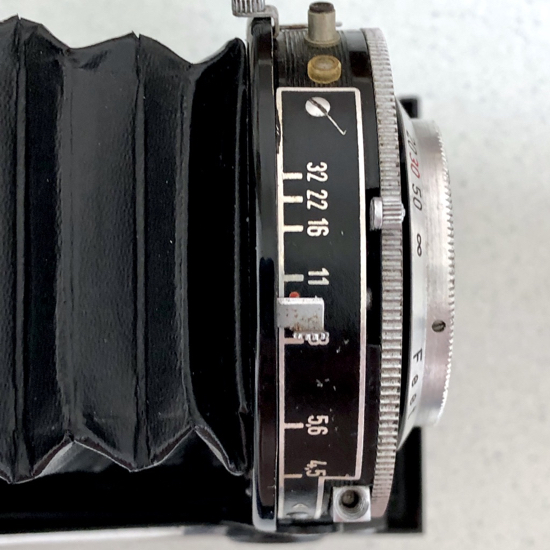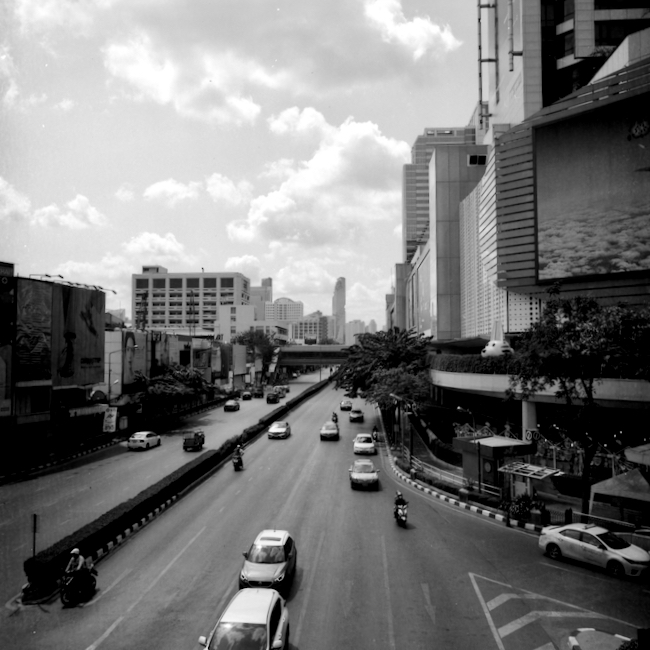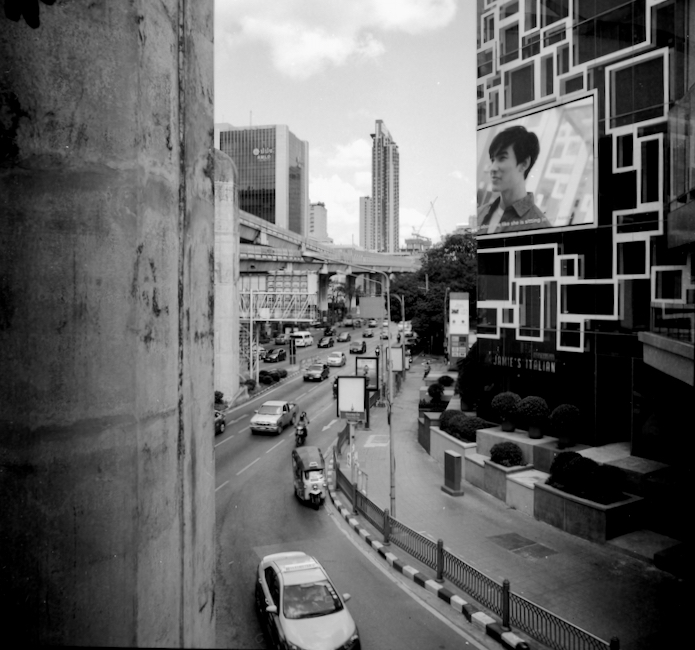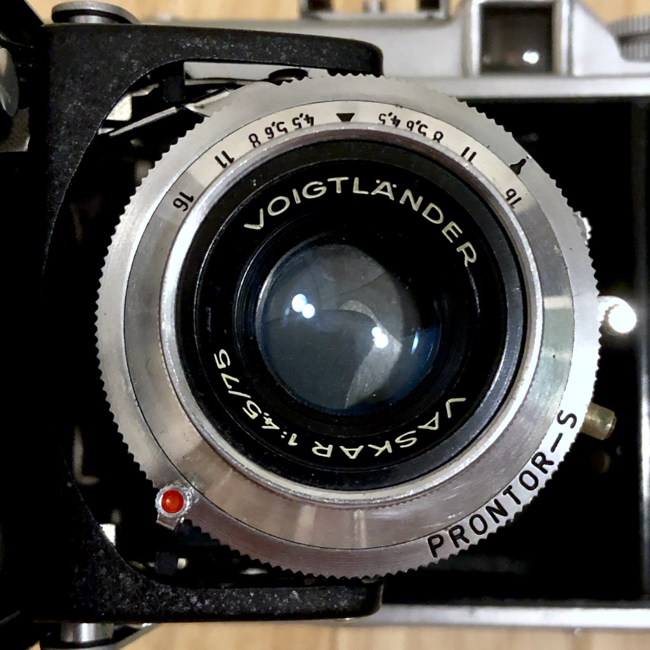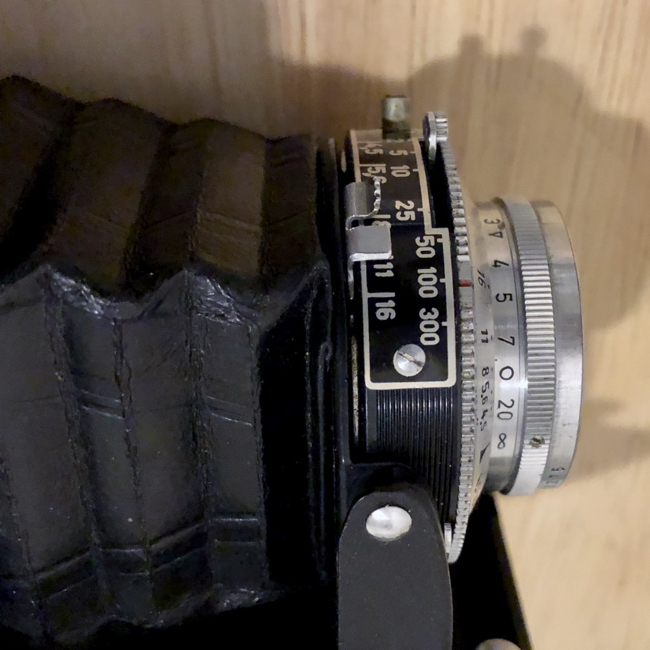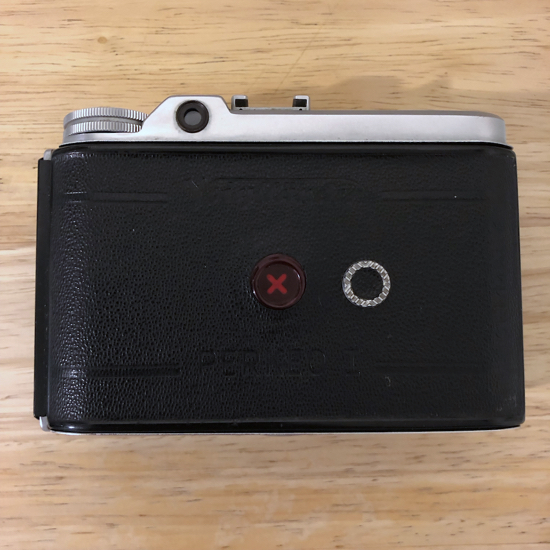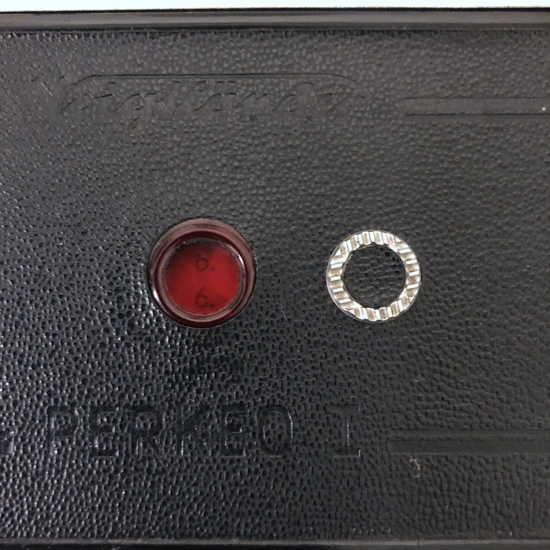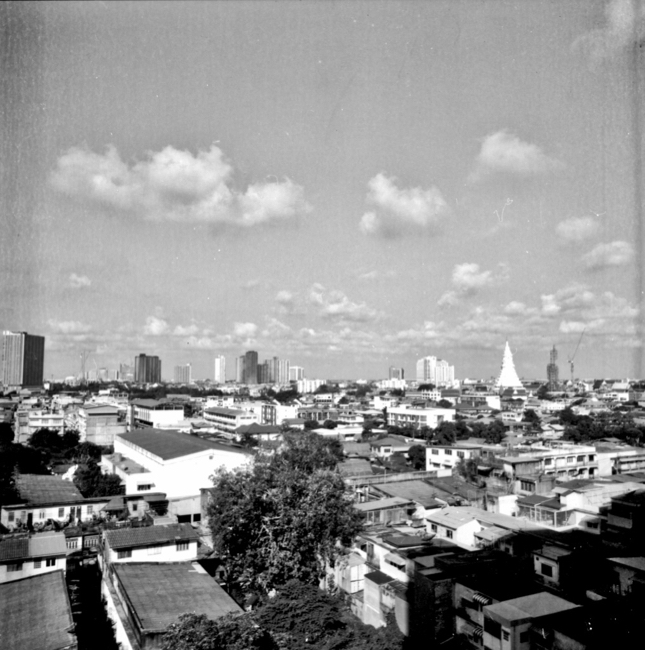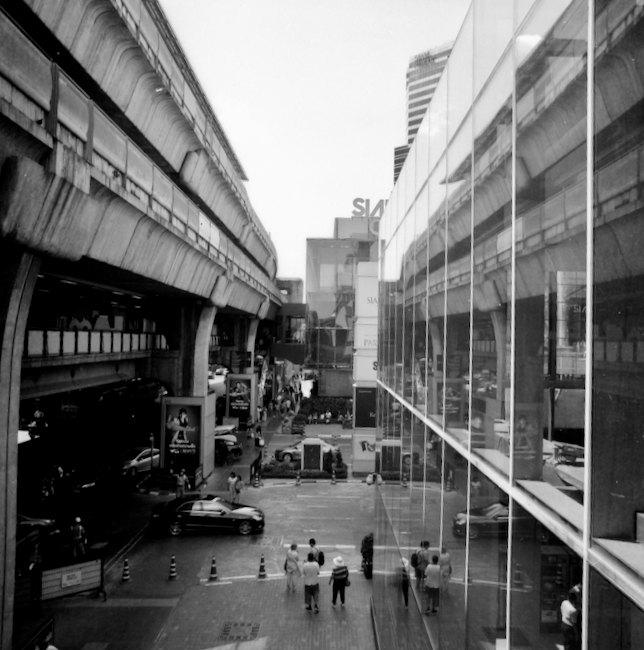Cassandra - A Brace of Bellows Cameras: Agfa Record III and Voigtländer Perkeo I
By Graham K. Rogers
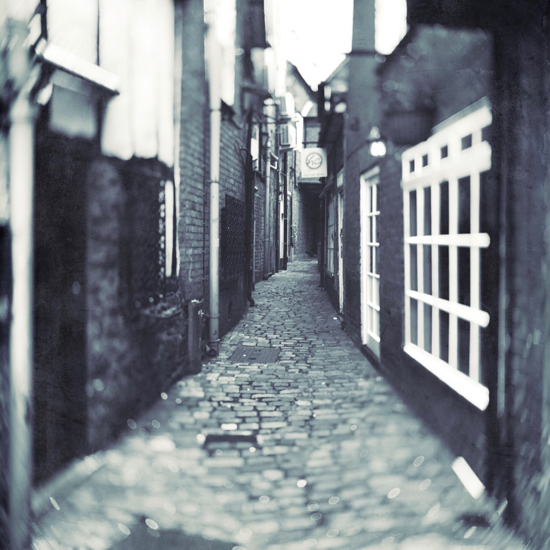
After years of digital camera use I have recently expanded my use of film and recently added the medium format Agfa Record III and Voigtländer Perkeo I bellows cameras. My impressions, images of the cameras and some early output are here.
I came across a couple of articles recently that took opposite views on the ways photographers use, or will be using Mirrorless cameras in the future. Although I recently bought a Nikon D850 I was sorely tempted by the Nikon Z7 which was announced just after I took delivery of the DSLR. I had made the decision to buy this for two main reasons: the lenses I already have; and the 45.7 MP sensor (also on the Z7). Nikon made some smart moves with the Z-series, not only with the sensor for the Z7, but also by producing an adapter for F-type lenses. They almost had me, but just too late.
On FStoppers, Andy Day thinks that the future is mirrorless; but the market for DSLR cameras particularly for high-end use, will continue for a while yet (Daven Mathies, Digital Trends). Neither Canon nor Nikon seem to be moving away at the moment, and major lens-makers are still developing new products (Alex Cooke, FStoppers). The market for the DSLR is likely to continue for a while yet.
The D850 put the spark back into my photography and as a result also increased my interest in film. I have owned a Hasselblad 500 C/M for a couple of years, but in the last few months I became interested in several 35mm cameras, such as Olympus OM1, the Nikon FM series and some other golden oldies. I bought a Nikon FM10, which had a disastrous end in a local river. I finally settled on a Mamiya/Sekor 1000DTL and a Nikon FM2.
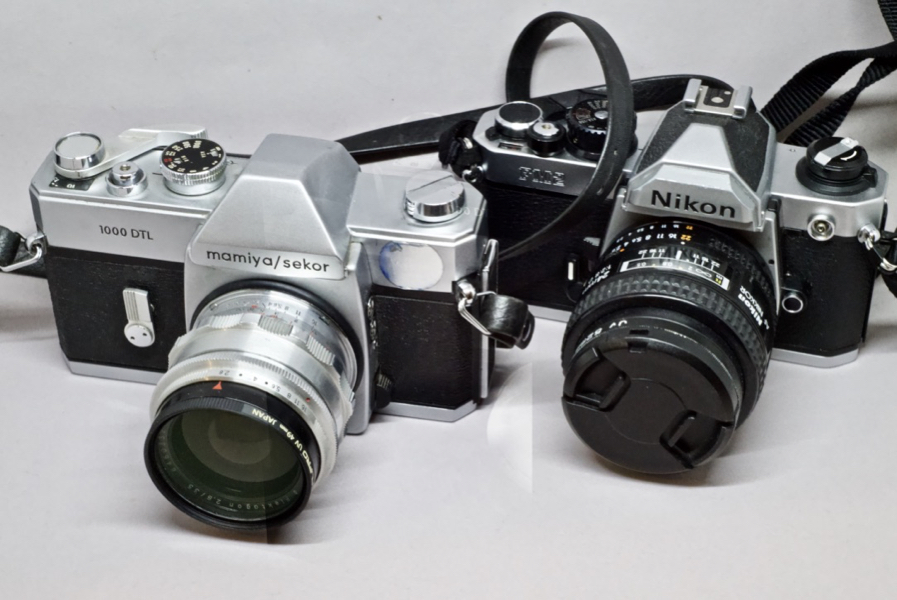
Mamiya 1000DTL with Flektagon lens (left) and Nikon FM2
The Mamiya came with an unbranded 80-200 telephoto lens. I had some good results with this heavy lens so I added a 35 mm Zeiss Flektogon lens. The Nikon FM2 uses some of my current lenses. I have experimented with color and monochrome film, which I prefer. The problem with 35mm film for me is that it is small, especially as I have become used to working with medium format. Although there are more photographs on a 35mm roll, it is fussy to work with when scanning. The end results, while satisfying, are not as rich as when I use the larger format film.
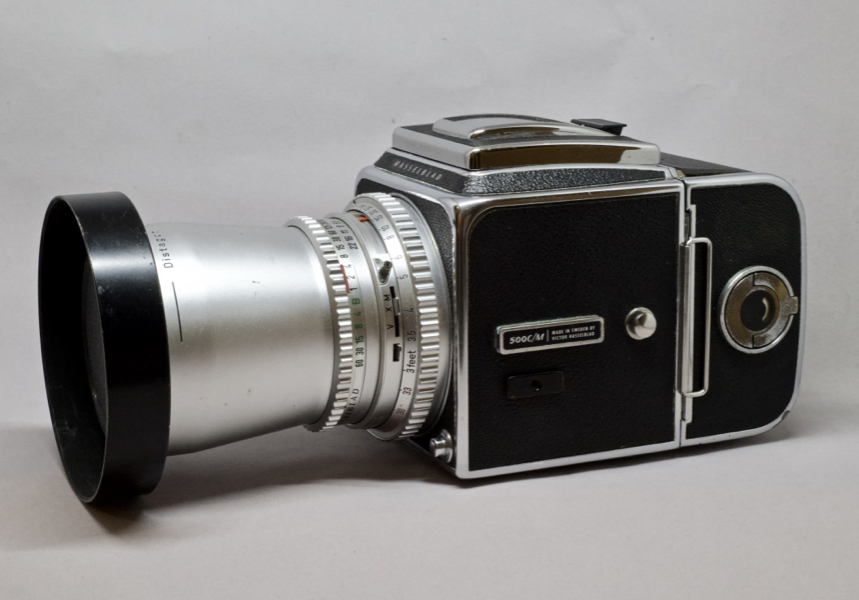
Hasselblad 500 C/M with Distagon Lens
I bought a second Hasselblad 500 C/M body and with the spare lens and other parts, I now have two. I took the time to have them serviced where I had bought the first one. In the last couple of weeks I also took delivery of two medium format, bellows cameras: the Agfa Record III, and a Voigtländer Perkeo I. As I was writing this an Agfa Isolette also arrived and I will be writing about that when the first films have been developed.
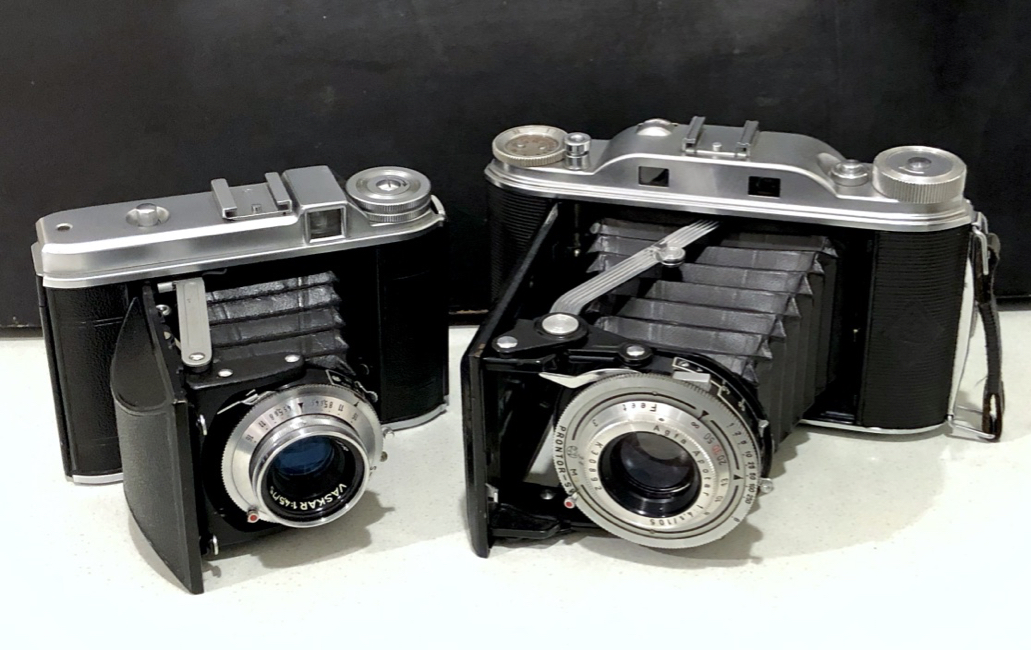
Voigtländer Perkeo I (left) and Agfa Record III
Agfa Record III
Bellows cameras were reasonably common when I was a child, but have almost disappeared now. As I see it, a main advantage is that the lens and its mechanism can be hidden away when not in use, so the flat package takes up less room and can be put in a pocket (in some cases). The Agfa Record II was made between 1952 and 1955.
The Agfa does not fit in my pocket, but is light and can be fairly easily carried. It takes up far less room in my bag than the Nikon DSLR. A button to release the lens is on the top, to the left of the viewfinder. The bellows part springs open, pushing the 105 mm lens forwards, but I sometimes have to press the twin supports a little to lock it into place. Closing needs me to press down on the hinged middle of the supports, then ease the structure back in until it clicks shut.
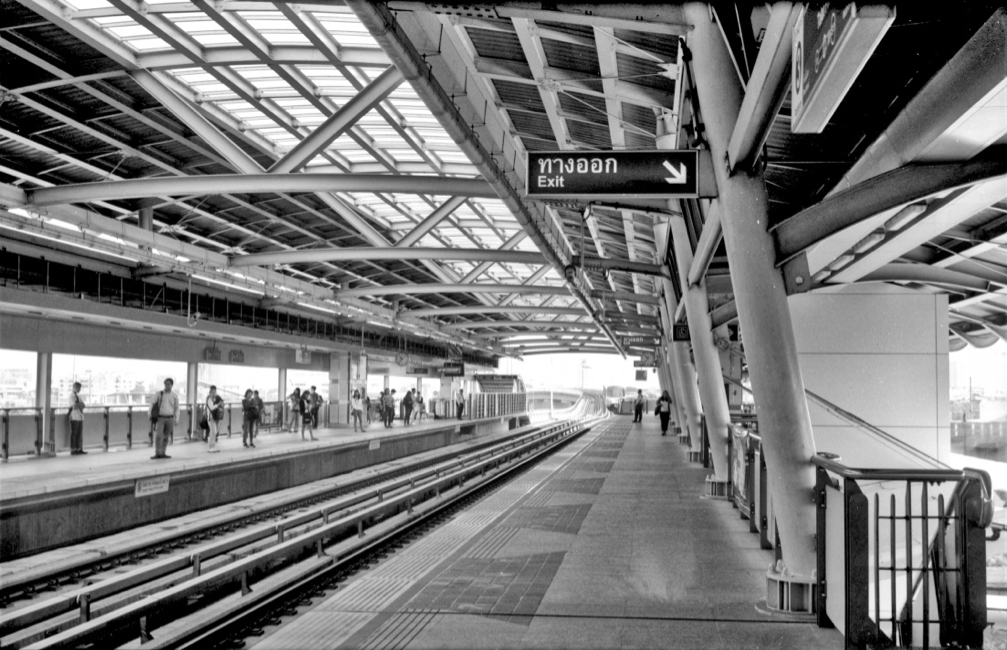
Photograph from Agfa Record III - ISO 400
The viewfinder is not linked to the lens, but a dial to the right is used to bring the image into focus. I take a reading from the dial and use that to adjust distance on the lens. I am not sure how accurate this is, but infinity is infinity.
I take exposure readings using the iPhone app Pocket Light Meter: something which has served me well. ISO depends on the film being used of course. When I am ready to take a shot, the shutter must be cocked with a lever on the left side of the lens. The shutter release is on the top right of the body. Winding the film on once the photograph is taken, releases the shutter-cocking lever, so double exposure is not possible.
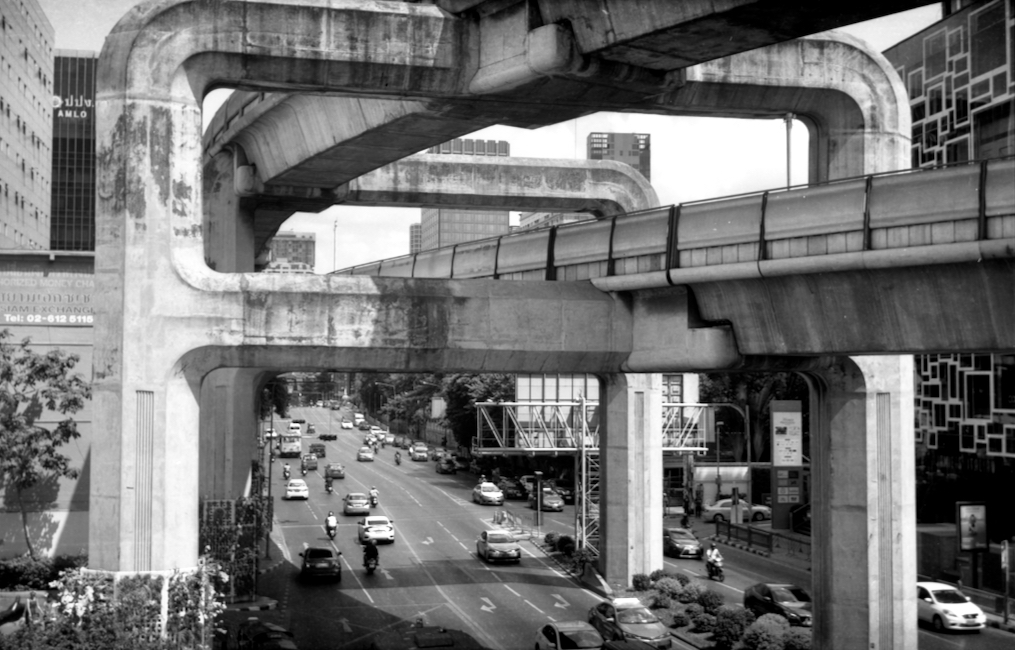
Photograph from Agfa Record III - ISO 50
I use Ilford film mostly, so I am familiar with the markings on the paper backing, viewed through a red window when rolling film on. This red viewing window is opened using a lever just to the right, so the markings are visible. When I switched to a different film type (Lomo Lady Grey) I missed the markings and ended up losing the roll. The problem also hit with the Voigtländer the first time I loaded it with Ilford film, but for a different reason (see below). Unlike the 6 x 6 square images of the Hasselblad, the Agfa uses the 6 x 9 format. The Voigtländer uses 6 x 6. The film rolls also have markings for 6 x 4.5 - 16 photos from a roll.
Film Markings - Ilford, Bergger Pancro and Lomo (right)
The dials round the lens control input: time and aperture. The time settings range from 1-250, plus B. Aperture settings are from 4.5 up to 32: the highest I have seen. Most of my DSLR lenses have a maximum of 22. Distance is marked in Feet (the camera came from the U.K.): from 3 up to 50 and infinity.
Agfa Record III - Lens and controls
The Voigtländer Perkeo I
I saw a Voigtländer bellows-type camera a few months ago in a Bangkok shop, but decided against purchase at that time. My recent look at online availability of older cameras had me looking through hundreds of models and I bought both the Agfa Record III and the Voigtländer Perkeo on eBay for quite low prices. Although the cameras are cheap, shipping adds a fair amount and there may be import fees.
This is a smaller camera than the Agfa and produces images of 6x6 like the Hasselblad. Perkeo is German for pygmy - a diminutive race from central Africa - and the name is reflected in the way this medium format camera fits in my pocket which I find really attractive. When it was unpacked I noticed the blemishes (reported by the seller), but with a camera made in the 1950s, some marks are to be expected.
Examples of output from Voigtländer Perkeo I
My first problem was opening up the lens. There is an obvious button on the bottom plate of the camera, but I was not successful in my earliest attempts at opening the access. I teach engineering students and a group came into my office while I was grappling with the problem, so I gave them the task. It was open in about 10 seconds: as well as the button, the lens covering plate also needs to be persuaded a little. Once open, I was then unable to shut the lens, but the students came to the rescue again and found twin buttons on the rear of the lens plate that need to be pressed together. I have now found the manual online.
Voigtländer Perkeo I - Lens and controls
The red film viewing window is marked by a large X to show that the window is closed and safe. While there was an obvious lever on the Agfa to open this, what appeared to be a button did not work when I pressed it and I lost the first roll of film trying to work this out. The button is simply a circular lever that is turned to open the viewing window, although on first discovery it was quite stiff. Once I was used to it, opening and shutting the X cover was easy.
Voigtländer Perkeo I - Film viewing window
The Perkeo Vaskar 75 lens and its controls look similar to the Agfa setup; they were made about the same time after all (compare any two modern cameras). However, Aperture is limited to 4.5 - 16 and the time settings run from 1 - 300 plus B. I had tried some ISO 50 film in the Agfa, but I thought the Voigtländer would behave better with some Bergger Pancro 400, just arrived from CameraFilmPhoto in Hong Kong. While in many light conditions this is suitable, in the really bright, noon-time sunlight here, the film was too limited, with time readings of 1/500 or more for the maximum 16 aperture. I was carrying the Agfa at the time with ISO 50 loaded and switched to that.
Comparisons and Comments
I took both cameras out for a couple of experimental shoots locally and in central Bangkok. My first objective was to check for light leaks and test the limits of performance. The Agfa Record III is more versatile with its larger aperture options (4.5 - 32), so I did not find that the maximum time limit (1/250) was as restrictive as I had expected. This was also my first experience of 6 x 9 output and I was impressed with my first results.
The Voigtländer is a delight to handle with its small size, once the lens housing is open, but the limited aperture options will need me to consider film choice carefully. While ISO 400 works well in most cameras, the Voigtländer limits this with its aperture range and the time (min 1/300) in bright sunlight. That is simply part of my learning process and not a fault of the camera.
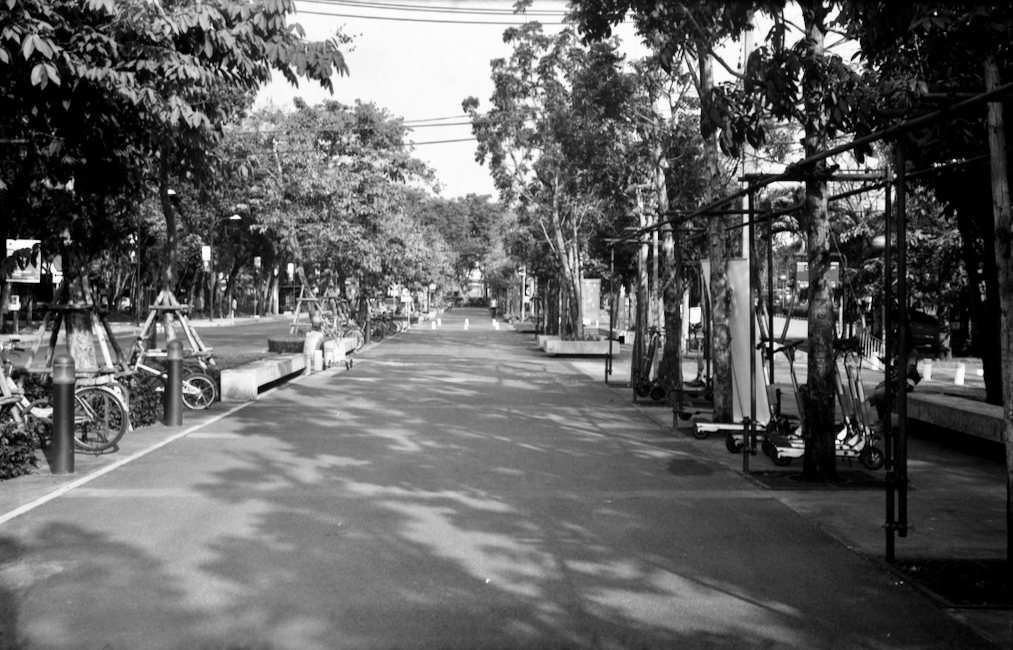
Photograph from Agfa Record III
Output from the Agfa was far better in terms of exposure and sharpness, with both Pan F Plus (ISO 50) and HP5 (400), although some grain did creep in with certain light conditions. The output from the Voigtländer was also sharp - both lenses performed beautifully - but output was using ISO 400 film was affected by my exposure settings. The Agfa just seemed easier to work with when making exposure and time settings.
Photo Output from Voigtländer Perkeo I
In terms of portability the Voigtländer wins hands down, but output from the Agfa seems to be superior in my first couple of test rolls. I am not particularly concerned with portability - my use of Hasselblad cameras would demonstrate that - and the Agfa takes up little space in my bag. The Voigtländer is only a little larger than the iPhone X I have and I can carry both in my hand at the same time.
It is a hard decision to choose one over the other if I had to select one, but the output quality (so far) of the Agfa and its interesting 6x9 images gives it a slight edge in most scenarios. This new look at medium format also has me moving away more from my recent flirtation with 35mm cameras.
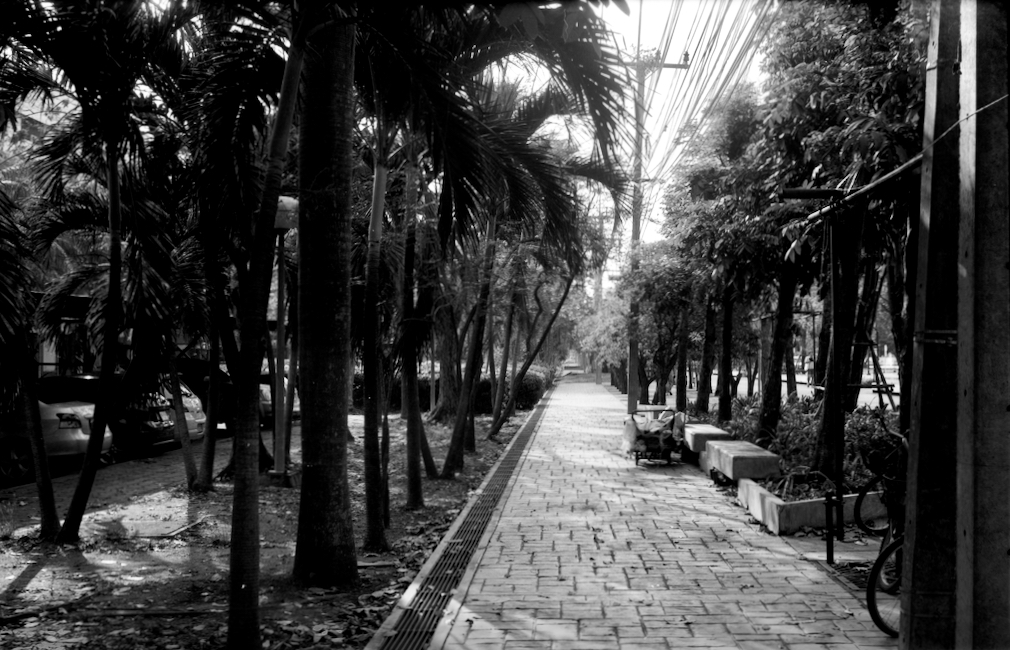
Photograph from Agfa Record III
Graham K. Rogers teaches at the Faculty of Engineering, Mahidol University in Thailand. He wrote in the Bangkok Post, Database supplement on IT subjects. For the last seven years of Database he wrote a column on Apple and Macs. After 3 years writing a column in the Life supplement, he is now no longer associated with the Bangkok Post. He can be followed on Twitter (@extensions_th)
|









